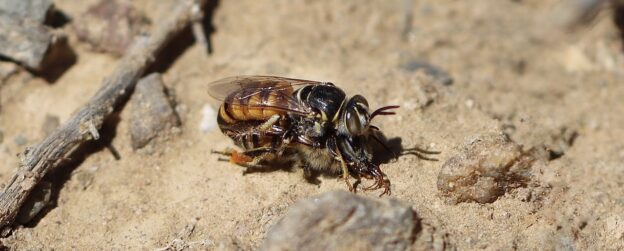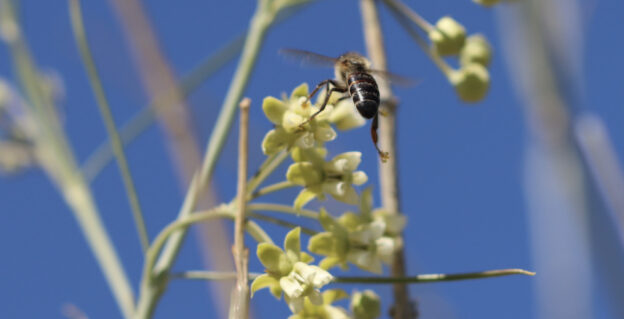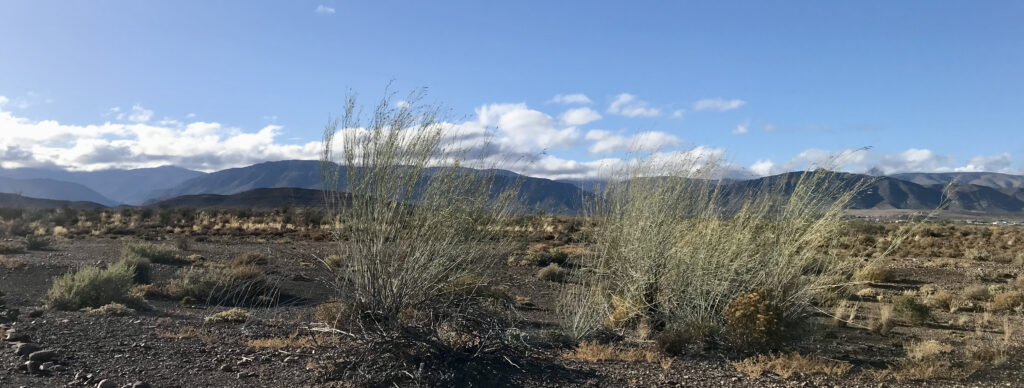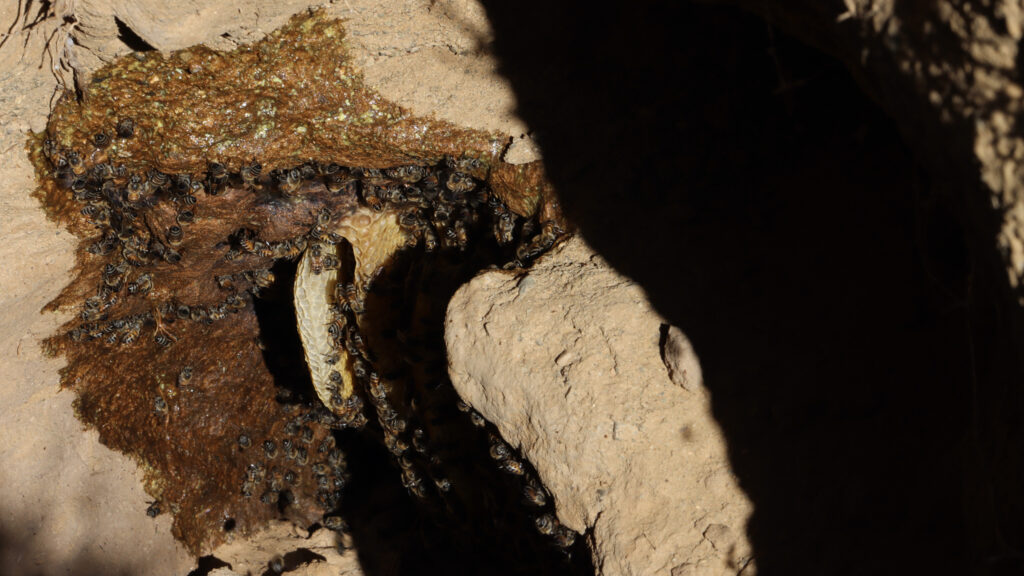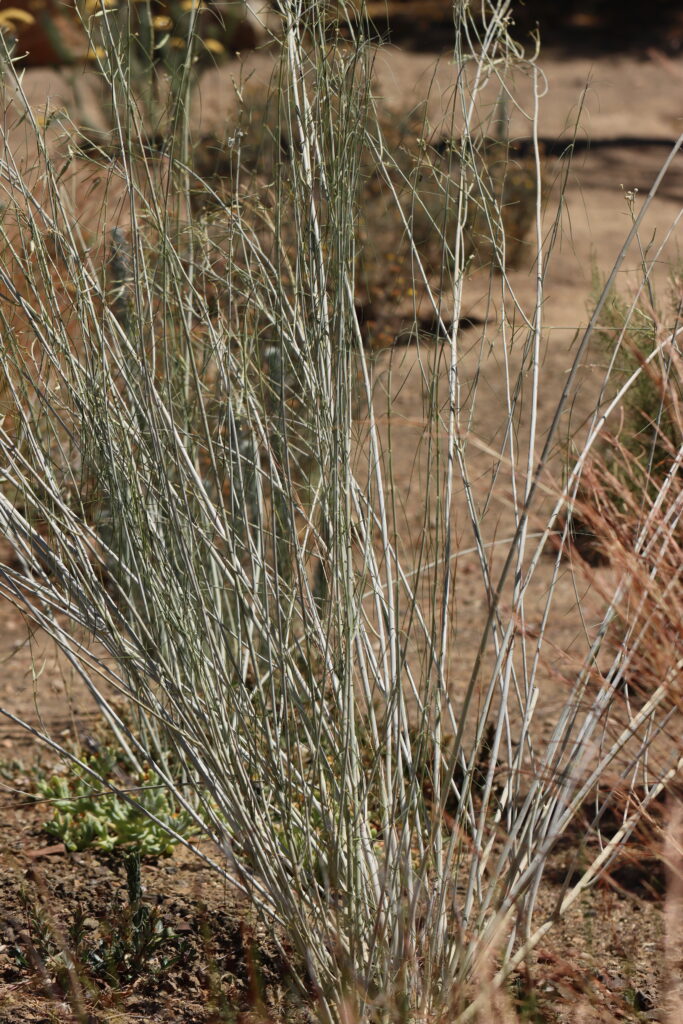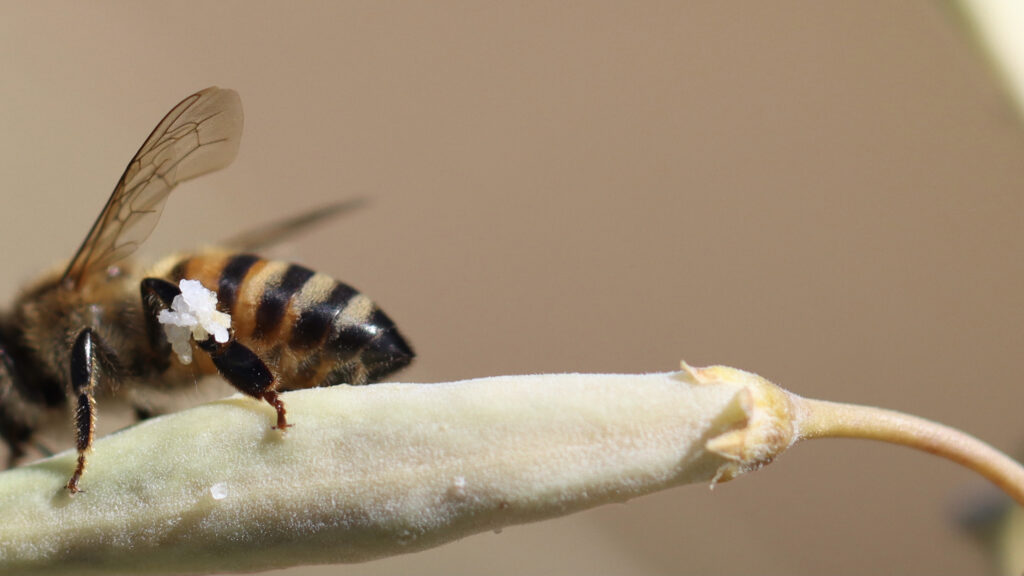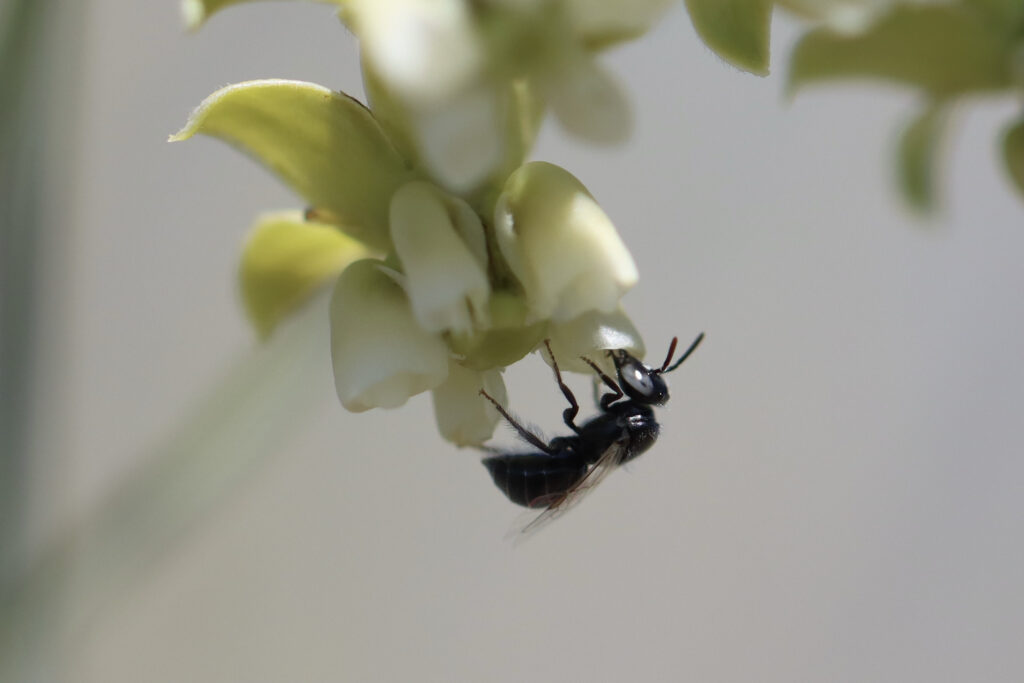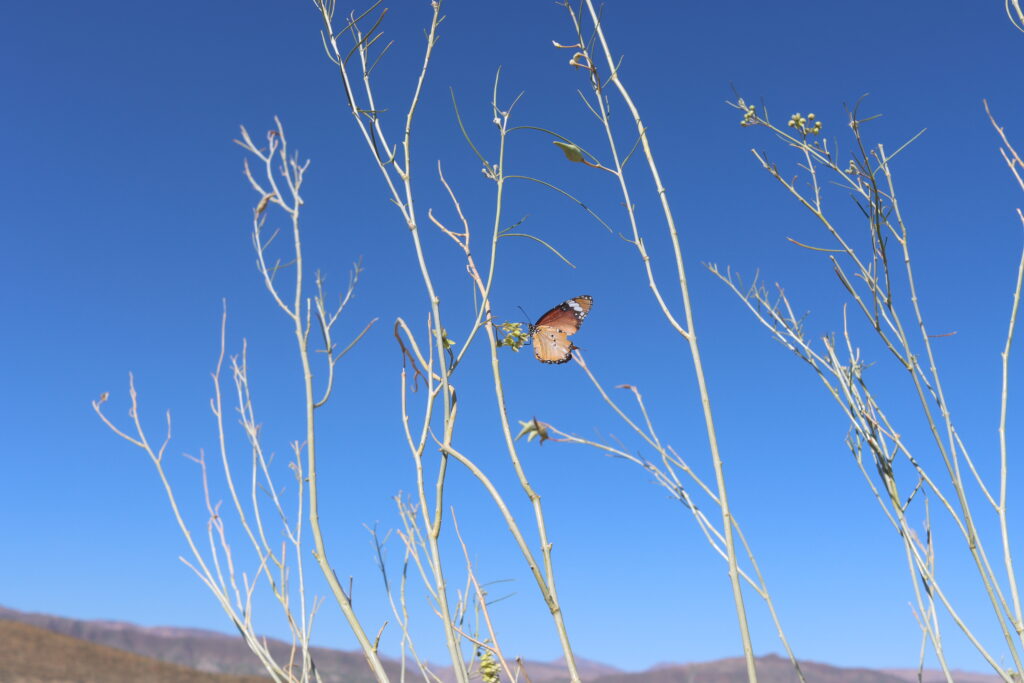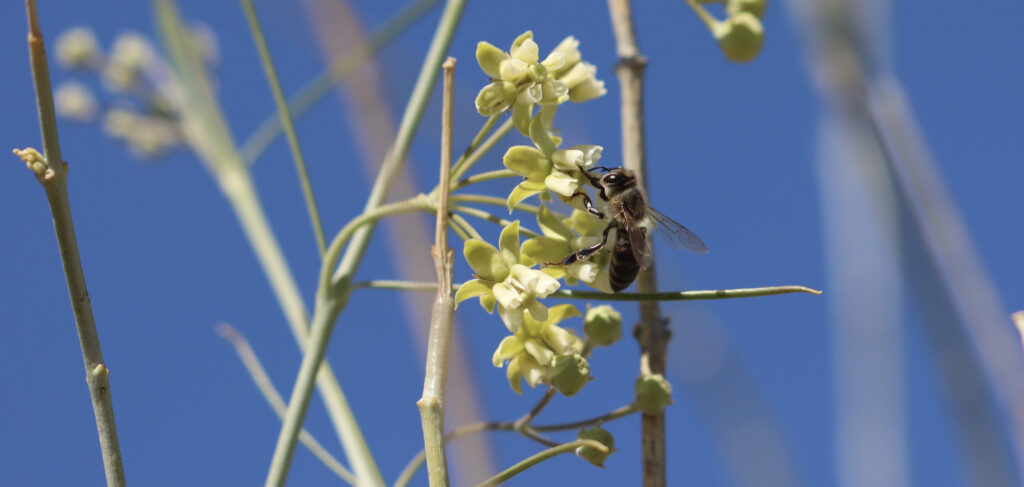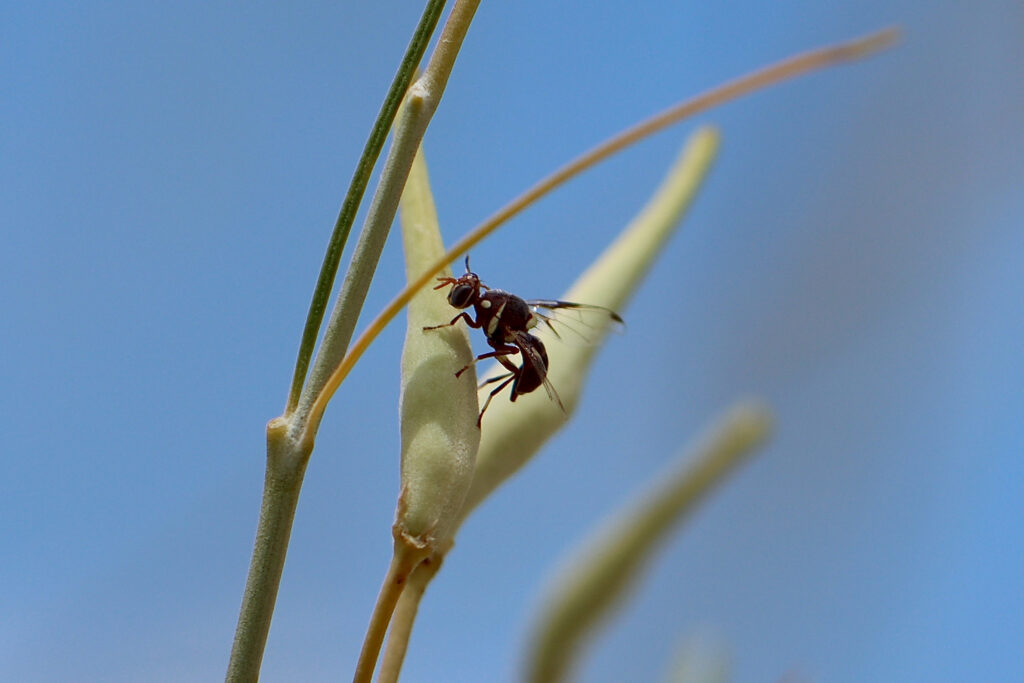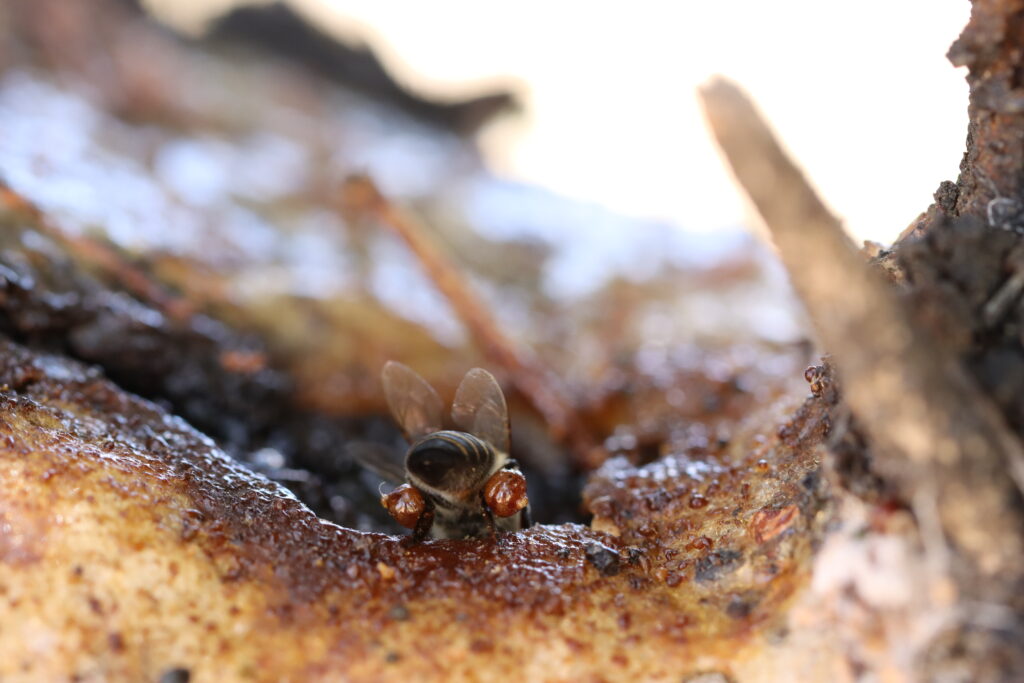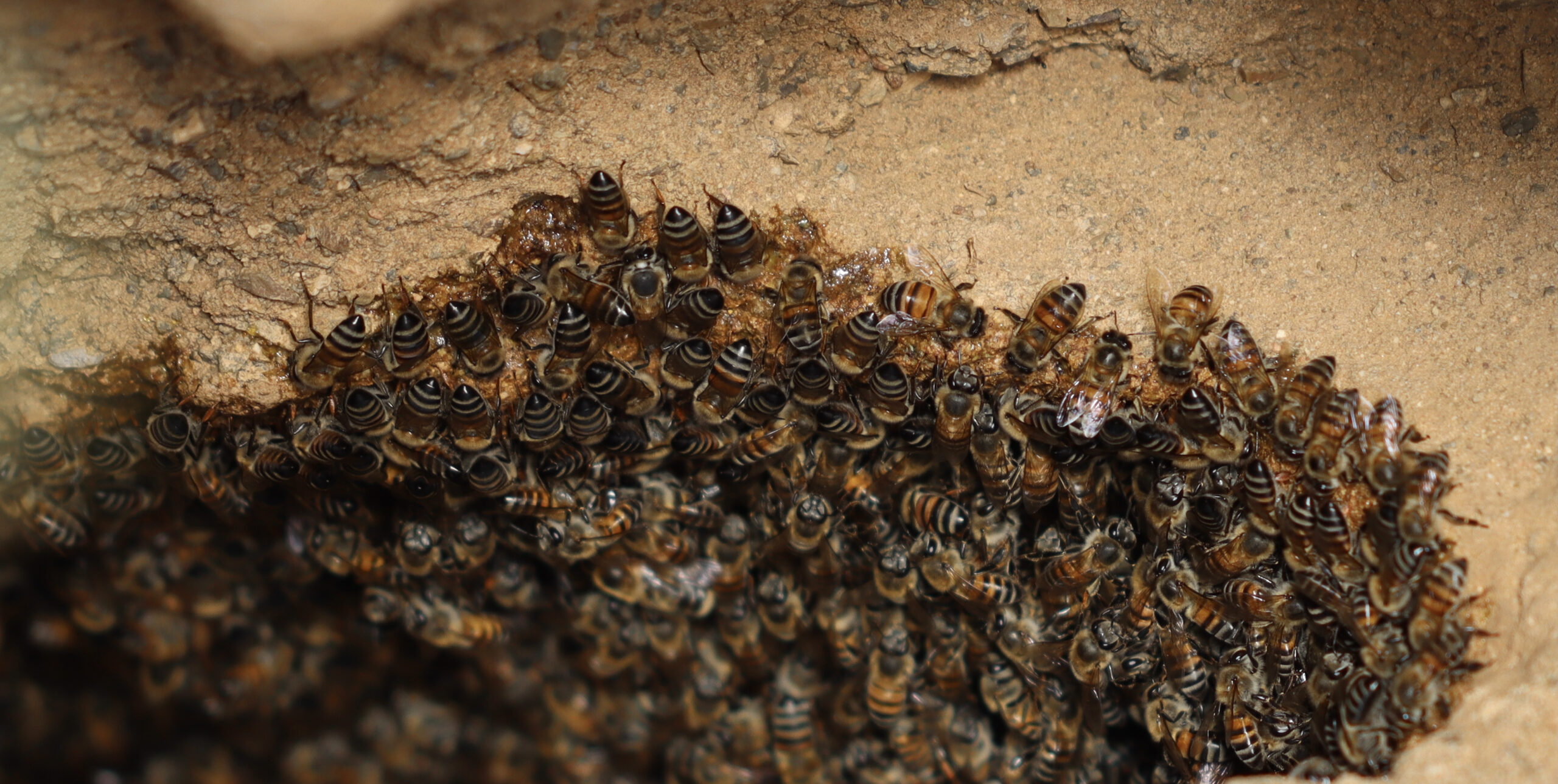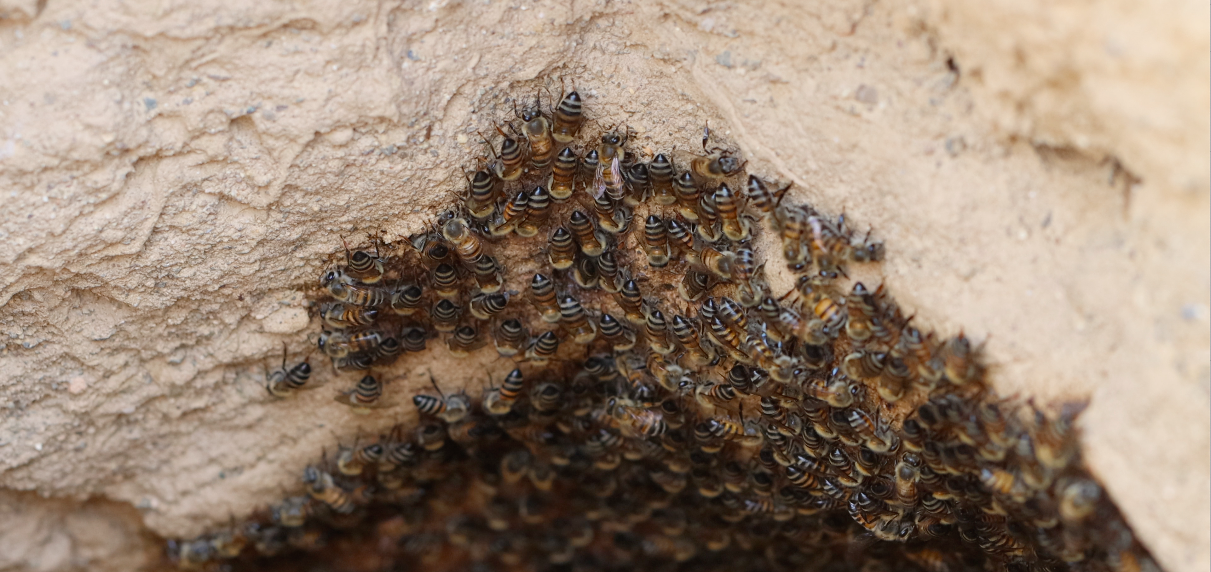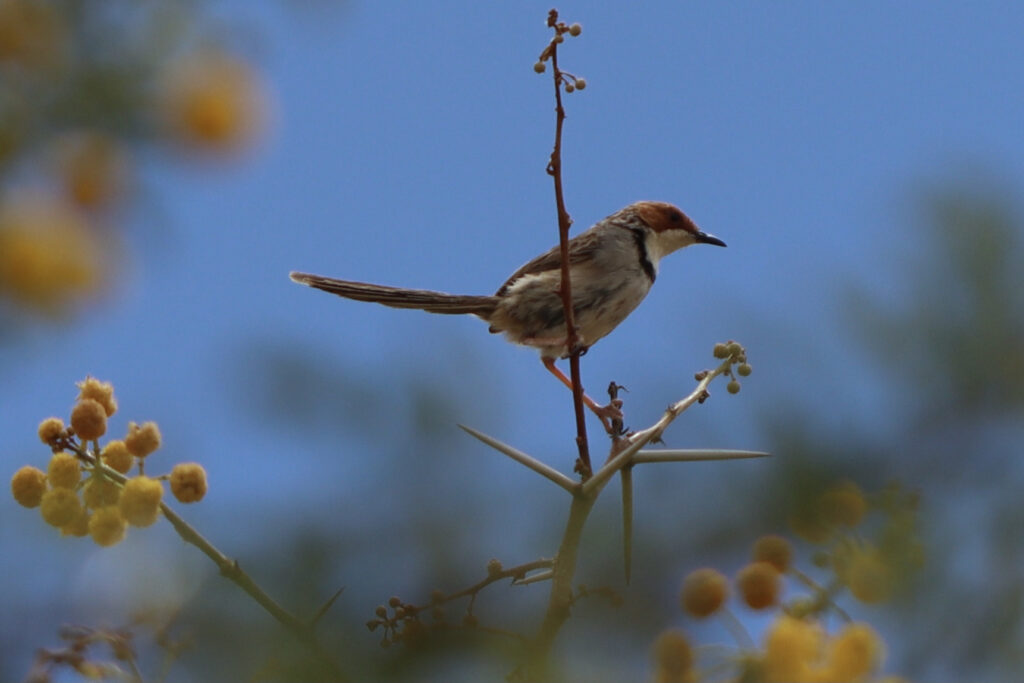How These Predatory Wasps Use Honeybees to Fuel Their Survival and Reproduction.
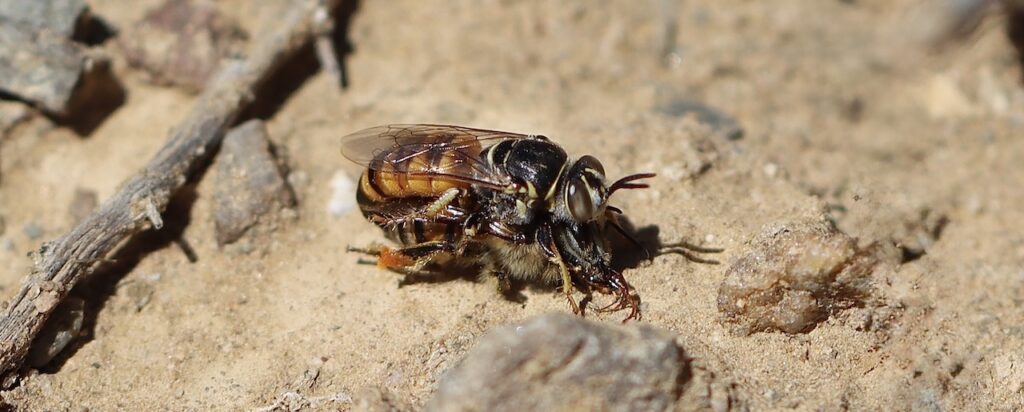
Survival and reproduction come with tough choices for many animals, and both parasitic and predatory wasps—like Palarus latifrons—are no exception. They rely on two key resources: hosts or prey for their offspring, and sugar to fuel their own bodies and activities. Since these resources are often found in different locations, wasps must carefully divide their time between hunting and feeding. With short lifespans and limited or unpredictable resources, every decision counts—should they pursue prey or stop to refuel? The choice can have a significant impact on their survival and reproductive success in the wild.
Among predatory wasps, Palarus latifrons exhibits particularly striking hunting strategies, preying on honeybees (Apis mellifera), capturing them mid-flight and immediately paralysing them. Subdued bees are then carried to the wasp’s nest, where several paralysed bees are stored in a chamber. A single egg is laid on one of them. The stored prey provides nourishment for the developing larva, until it reaches the pupal stage. After pupation, the fully developed adult wasp emerges from its cocoon.
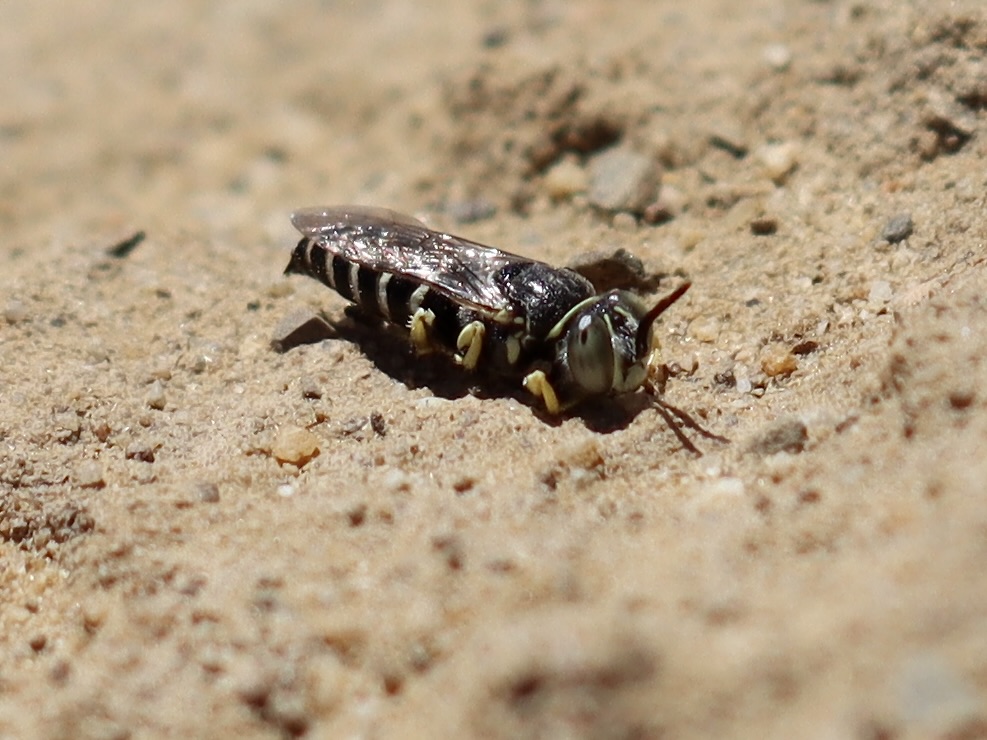
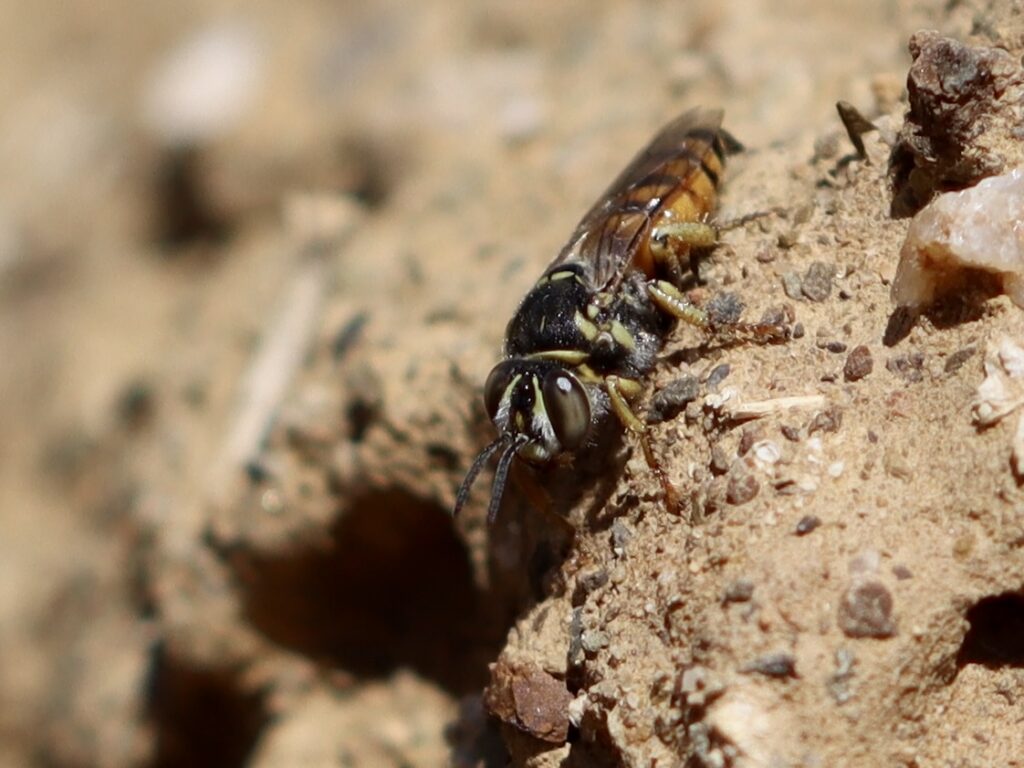
Palarus latifrons is a medium-sized solitary wasp with a robust body. The female has distinctive black and yellow bands on its abdomen, whereas the male has a black and white banded pattern and is generally smaller than the female. The thorax is usually black and their broad faces have porcelain-like markings (lati- means broad, -frons means forehead or front in Latin). Palarus latifrons is indigenous to Sub-Saharan Africa, however, its distribution extends from the Cape to as far north as Ethiopia and the Arabian deserts of mainly the Arabian Gulf countries. These wasps have adapted well to desert conditions where their activity is high in the hot and dry summer months. Its predatory behaviour has earned it the common name “Banded Bee pirate” (BBP). While it is known to target managed hives, very little has been documented about its interactions with wild honeybee nests.
Hunting for their offspring
At Wolwekraal Nature Reserve on the edge of the Great Karoo—a region considered a desert with annual rainfall less than 200 mm—3 of the 5 wild honeybee nests in deserted aardvark burrows were visited by BBPs, both female and male. One of the nests had up to 8 BBPs hunting around midday. From December through February, maximum temperatures climb to the upper 30 and low 40°C range. Ground temperatures can reach over 50°C. The BBPs use the heat of the sand to gain thermal energy, often flattening their bodies to increase surface area and maximise heat absorption. When warmed up they are capable of hunting at optimal temperature.
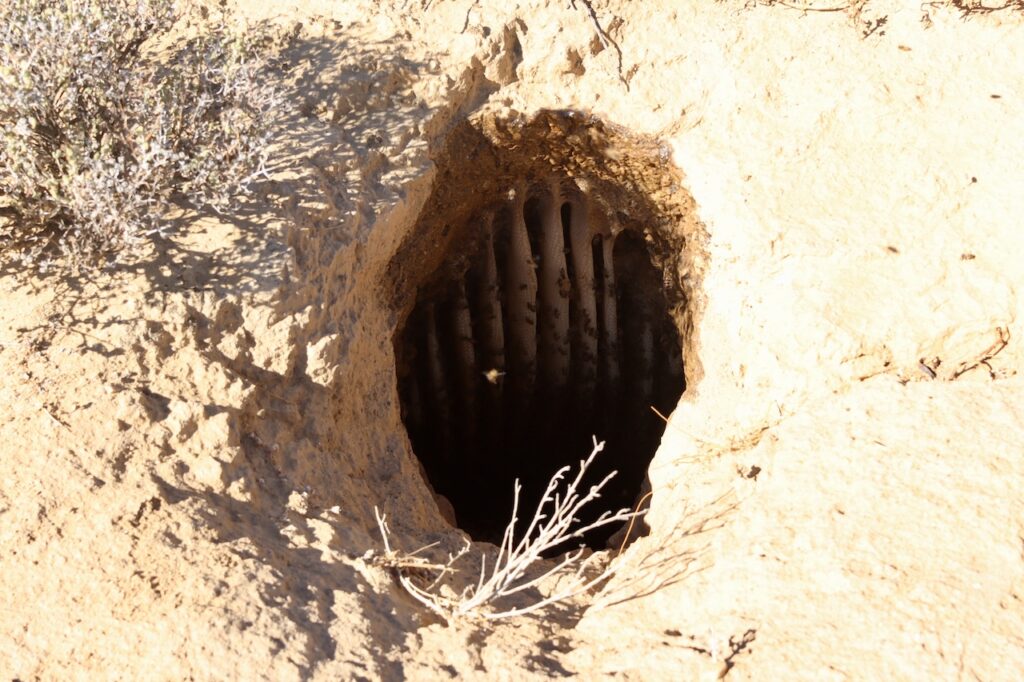
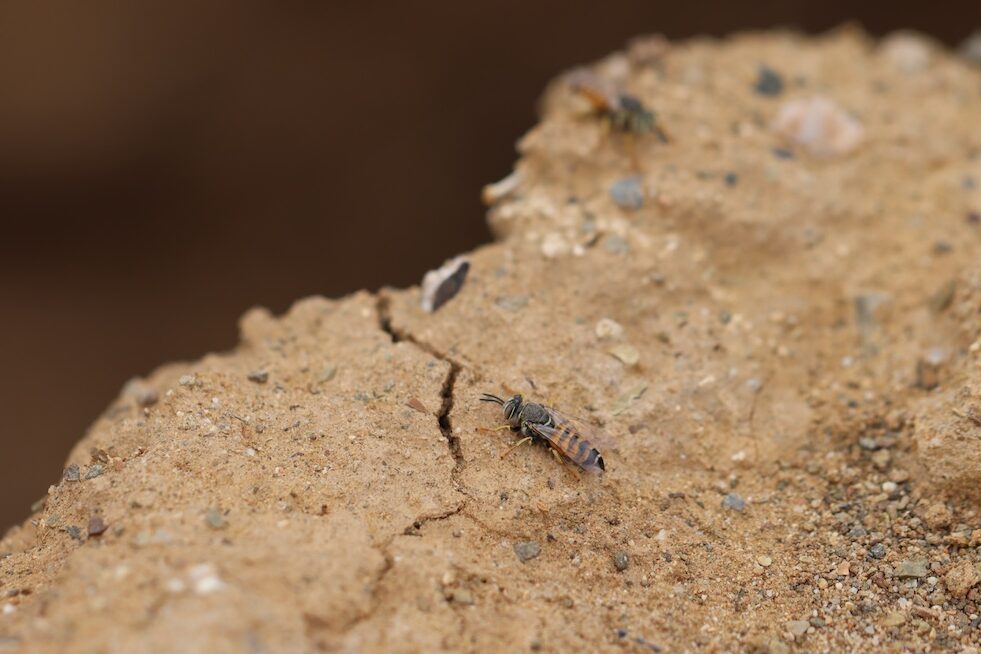
This wasp has a formidable hunting technique. As an agile flier, the BBP is able to crisscross hive entrances of managed bee colonies, while at wild nests located in burrows, wasps dart, in swooping, circular patterns over the nest opening, sometimes diving deep into the burrow and then flying sharply upwards attempting to intercept returning foragers. Notably, no direct attacks on bees clustered on the comb at wild nests were observed.
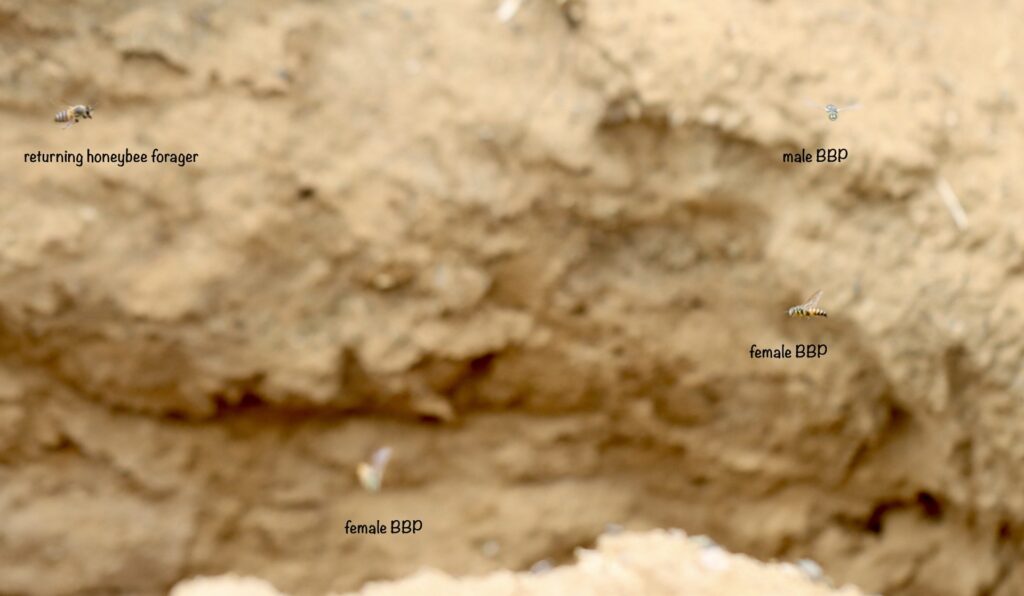
The wasp captures and subdues its prey midair, primarily targeting bees returning from foraging. However, it has also been seen persistently taunting and luring bees out of hives, striking as soon as a bee steps away from the colony. With its long, slender body, the BBP can position itself advantageously to deliver a sting. Still, honeybees sometimes manage to overpower and sting a BBP to death. Where BBP population densities are high—such as at apiary sites in the Porterville area, where we counted an average of 50 BBP wasps per hive—they can severely impact bee colonies, leading to significant honeybee losses. In a study carried out in front of a hive in the Kalahari, researchers killed 131 BBP wasps within 75min.

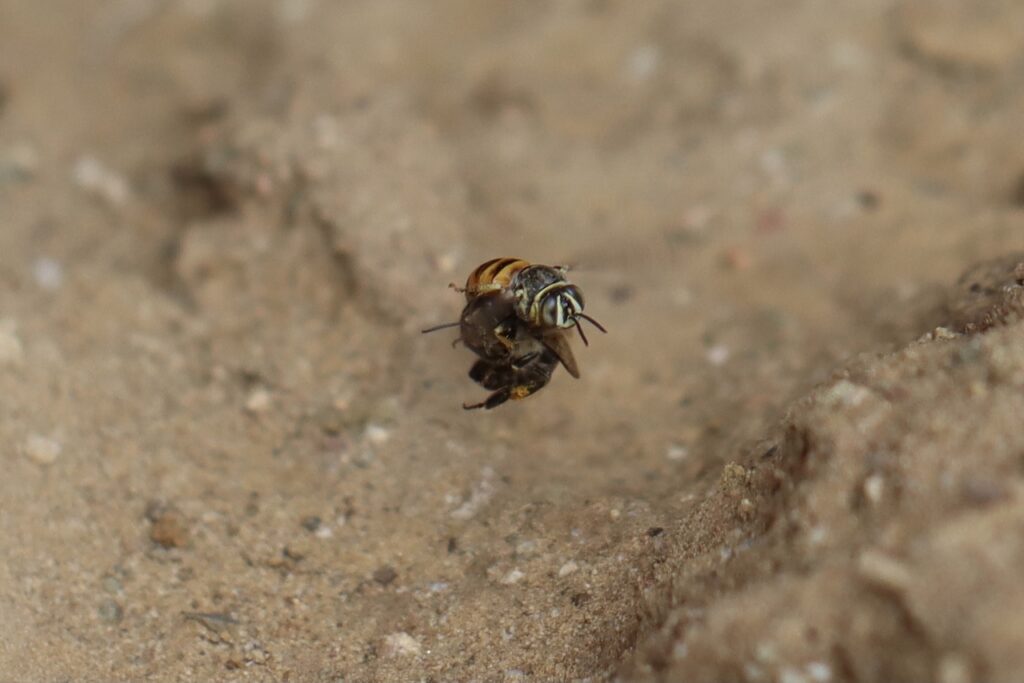
Female BBP wasp captures a forager with pollen still on her legs at the nest entrance.
The presence of these wasps near hives and at wild nests, is thought to induce either a ‘moaning’ sound by the bees, or a distressed ‘piping’ sound. The distress signals as recorded at the Porterville apiary site were intense and acute. Here, foraging activities halted entirely and many of the bees formed a defensive line across the hive opening, preventing BBPs from entering. At a wild nest on Wolwekraal, short, singular piping sounds were heard in the presence of the BBPs. BBP numbers were meagre and not all foraging ceased, but fewer foragers were seen leaving the nest.
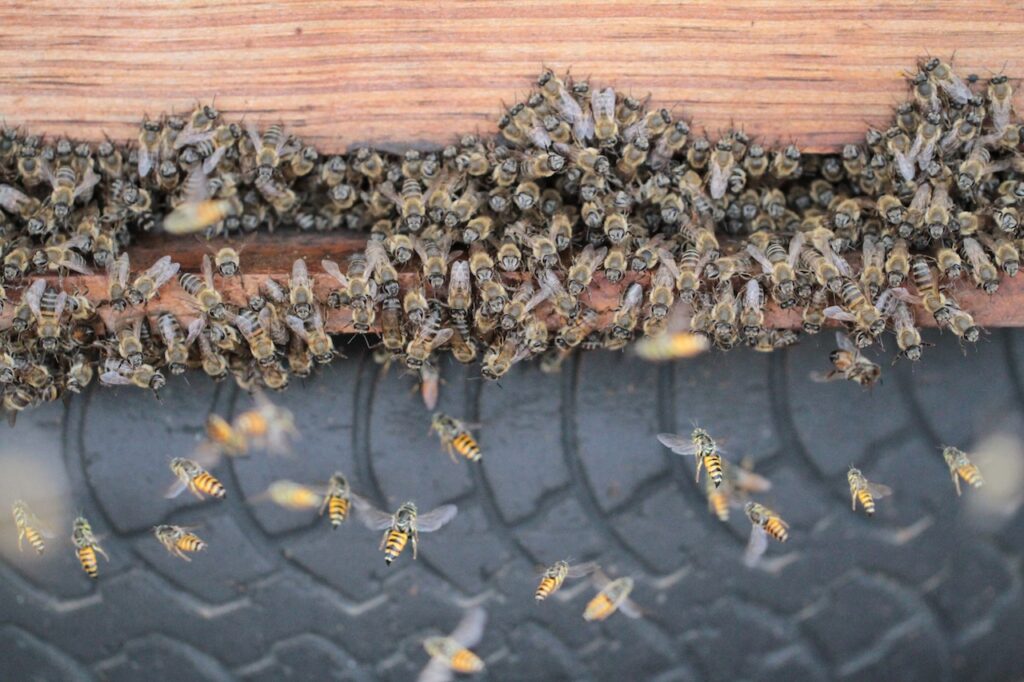
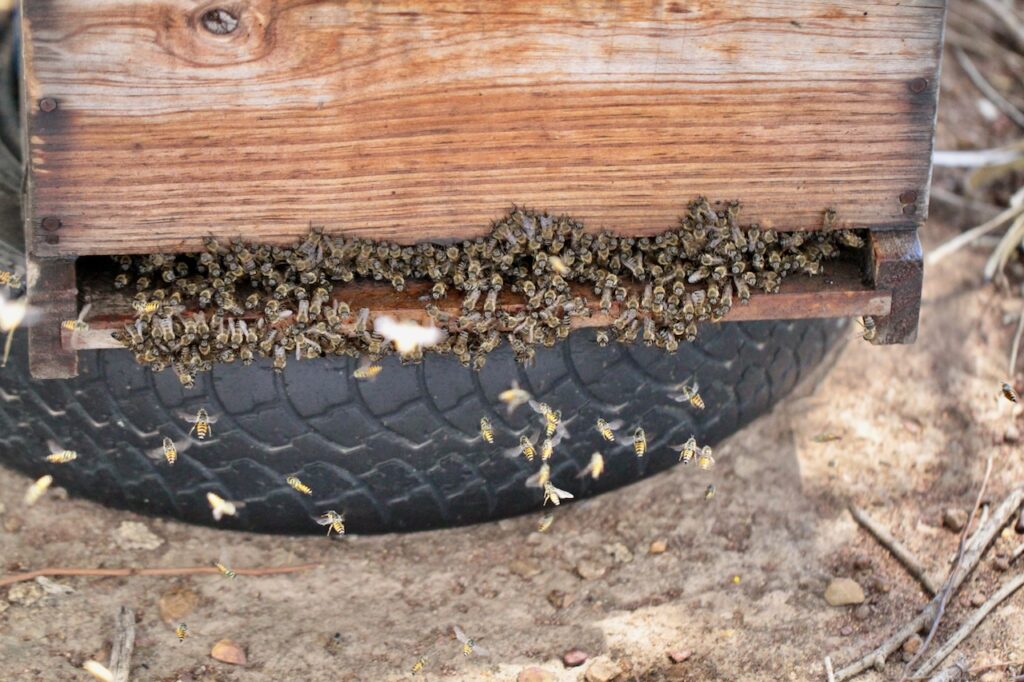
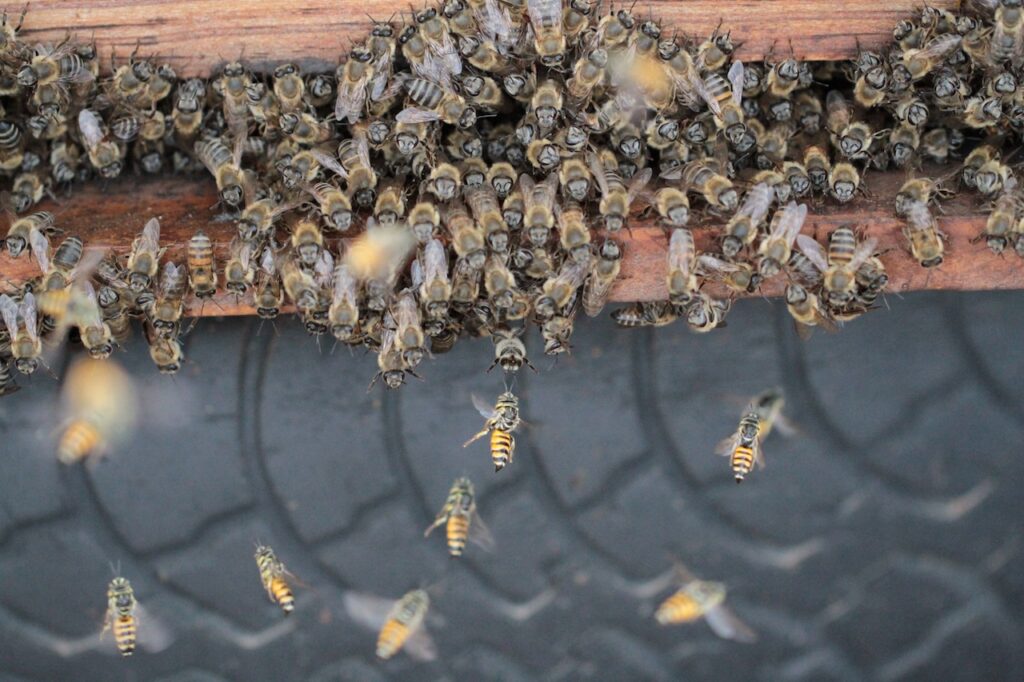
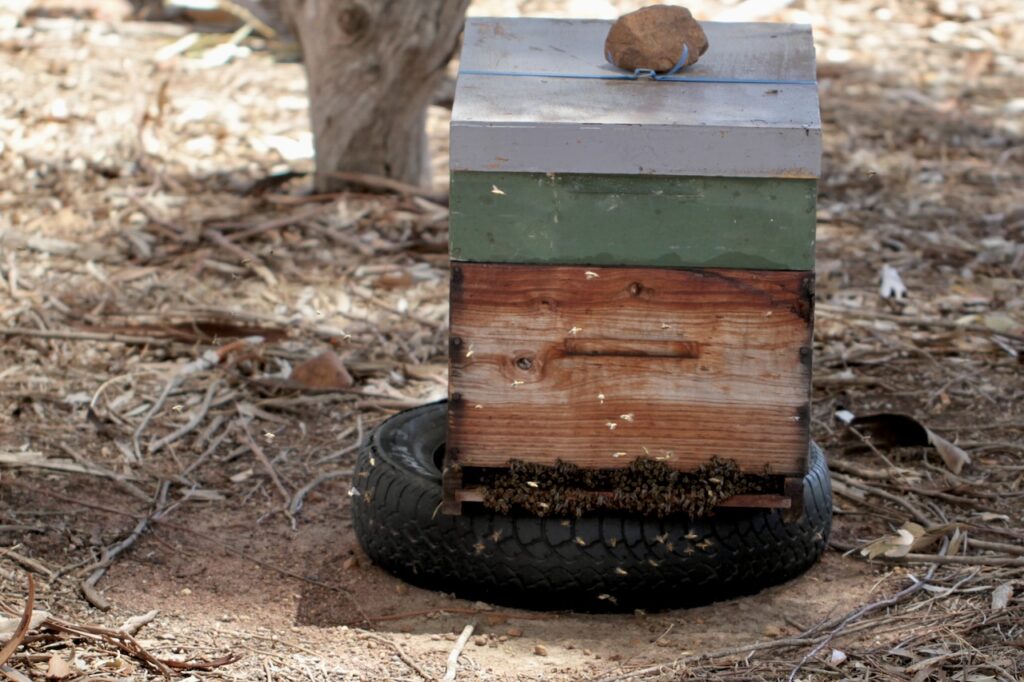
SOUNDS FROM A HIVE:
SOUNDS FROM A WILD HONEYBEE NEST:
BBP wasps are, however, not solely dependent on having to find honeybee nests and have been seen widely dispersed. An observational study in the Tanqua Karoo, recorded BBP wasps at flowering Vachellia karroo trees and water seeps. These seepages attract a diverse array of species, including wasps, solitary bees and honeybees, especially during the hot, dry summer months. At these seeps, BBP wasps were seen carrying off honeybees. Vachellia karroo in bloom serves as a key resource attracting numerous pollinators.
Water as a limiting resource
Water is the most limiting resource for all living creatures, a challenge intensified in desert regions where resources are scarce across both time and space. Wasps require water for survival, but they do not rely solely on seepages or riverbanks to obtain it. Research on water-deprived parasitic wasps (Pachycrepoideus vindemmiae) describes a water-intake strategy whereby the researchers observed increased feeding by the wasps on the water-rich :haemolymph of their hosts, :Drosophila suzukii larvae, for nourishment, in this case, to obtain water. This led to more host (larval) mortality, because the host-feeding by the wasps to sustain themselves with water (and not just to provide food for their offspring) killed the larvae. The paper notes, that these are interesting findings, not only because water has rarely been reported as a critical nutrient for adult wasps, but especially because using prey for the purpose of hydration does not appear to be a common strategy in nature. Or is it more common than thought?
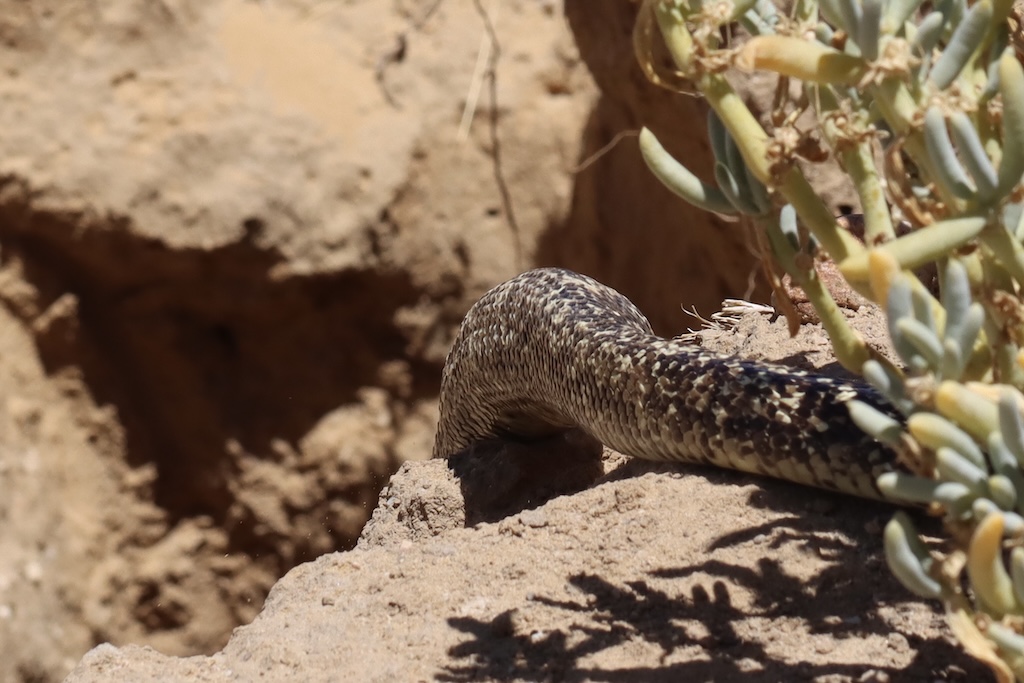
The Karoo’s extreme conditions demand remarkable adaptations from its inhabitants, with resident fauna deriving most of their body water from their food. The Cape cobra (Naja nivea) meets its water needs almost entirely through the moisture derived from the body fluids and tissues of its prey. Africa’s largest rodent, the Cape porcupine (Hystrix africaeaustralis), has developed a different strategy to cope with water scarcity—digging up and consuming dwarf succulents to access their moisture. Our observations of Cape porcupine diggings on Wolwekraal revealed an intense foraging pattern. It is also speculated that the eight-year drought in the Karoo from 2015 to 2023, forced porcupines to forage on aloe stems to access both moisture and food.
Besides water for hydration, nest cooling, humidity regulation, larval nourishment, and nest building in bees and wasps, every organism requires energy to survive. Honeybees rely on a steady intake of food to fuel their daily activities—from foraging and flying, to maintaining the nest and producing honey.
Fuelling their behaviour with an energy-rich resource
Foraging demands exceptional cognitive and flight abilities, requiring high metabolic and aerodynamic power. Nectar, a sugar-rich liquid produced by the glands—or nectaries—of flowering plants, provides the necessary energy. Foraging bees collect nectar using their long proboscis (or tongue) and store it in their honey stomach before returning to the nest. Nectar typically has a high water content, usually between 50% and 80%, depending on the plant species. Honeybees process this nectar through regurgitation, enzymatic fermentation, and evaporation to produce honey. Like bees, adult wasps, require quick and significant energy for flying and hunting, which they often obtain from flower nectar or other carbohydrate sources, such as honeydew from aphids, overripe or fermenting fruit, and tree sap.
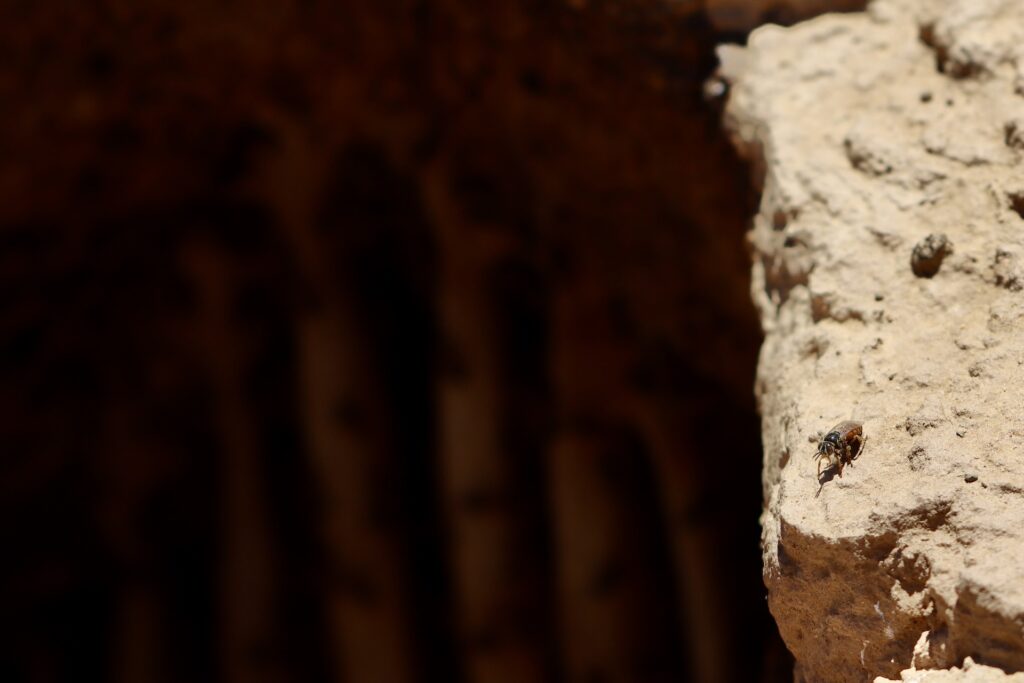
At Wolwekraal, BBP wasps were observed not only capturing prey at wild honeybee nests, but also fulfilling their second key requirement for survival and reproduction: obtaining sugar for energy. While the behaviour of BBP wasps extracting nectar directly from honeybees has been documented in writing, unique footage captured the extraordinary moment, providing a visual record of this fascinating interaction that, to my knowledge, has never been captured before. By preying primarily on returning foragers, these predatory wasps secure nourishment for their larvae, and access to energy-rich nectar and water. The latter is particularly vital in arid regions where water becomes scarce during the peak of summer and flowering plants are few and far between.
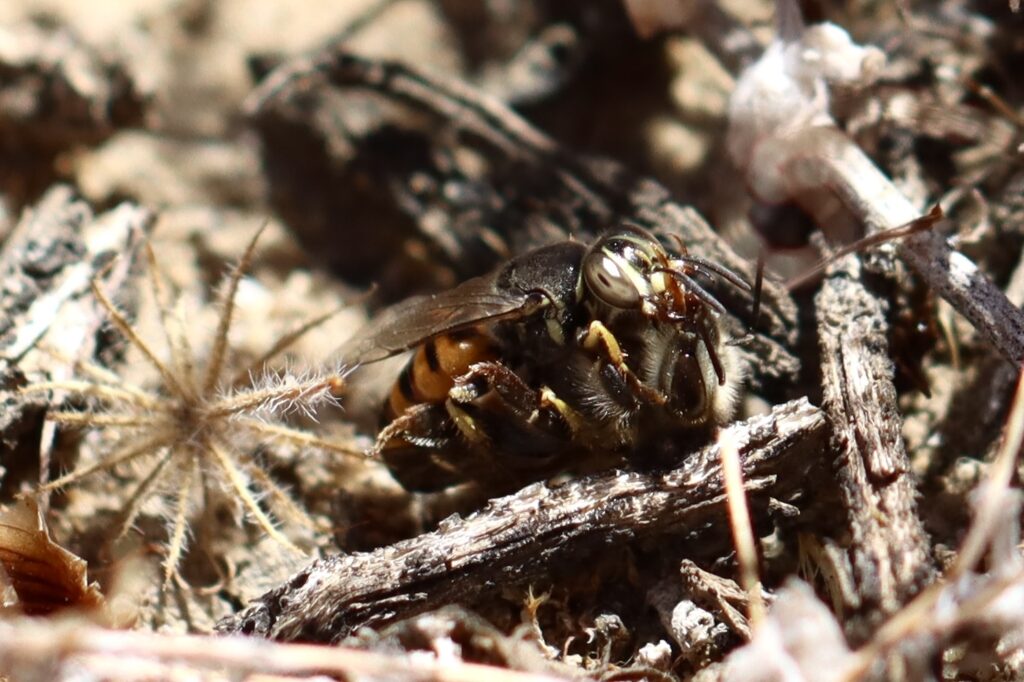
The captured bee is not always carried away to the nest but is sometimes used only as a food source. After stinging the bee, the wasp waits for it to calm down before beginning a mouth-to-mouth feeding procedure. The BBP forces open the bee’s mouthparts and, by pressing down on the bee’s abdomen, forces out the crop contents, effectively robbing it of its collected nectar. After this, the BBP either leaves the dead bee to resume hunting or, once suitably positioned, flies back to its nest with the bee. The BBP digs tunnels in the ground in especially sandy, granular soils. Inside the nest, the wasp provisions a chamber within its burrow with up to five bees, laying an egg on the mass before sealing the chamber and proceeding to provision the next one. While only females were documented exhibiting this nectar-robbing behaviour at Wolwekraal, records indicate that male BBPs also engage in this behaviour.
The path back to the nest is not always easy for the BBP and its prey. In nature, especially under extreme conditions, hazards abound and opportunities must be seized. At Wolwekraal, this duo racing through the sky is often followed by a scurry of small jackal flies, flying just below the honeybee. These kleptoparasitic milichiid flies (Desmometopa spp.) feed on nutrient-rich haemolymph and are known for stealing food from other insects. They are thought to be attracted by a chemical pheromone released by the stressed honeybee and must fly rapidly to keep pace with the much larger predatory BBP.
In the Tanqua Karoo, a small aggregation of six BBP nest entrances was observed within a 20 cm × 6 cm area. Kleptoparasite flies were spotted congregating at the entrances of the BBP nests. These flies were likely Craticulina seriata, known kleptoparasites of sand wasps. They lay eggs that hatch immediately, with the larvae feeding on the honeybee prey. The observations also revealed a BBP returning to its nest, carrying a drone—the much larger male honeybee.
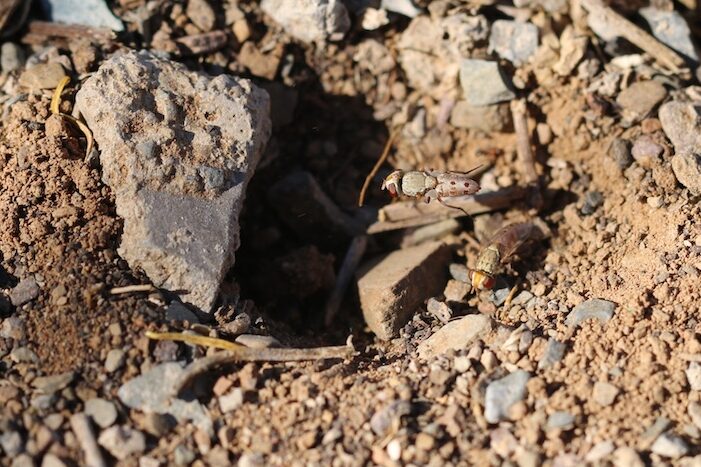
The role of male BBP wasps at wild honeybee nests remains unclear. Like honeybee drones, males lack a sting. They often chase female wasps, possibly mating near the nest, and sometimes mistakenly pursue honeybees. This results in chaotic, fast-paced activity above the nest entrance.
The need for a balanced ecology
Observing the ecological dynamics around :wild honeybee nests offers valuable insights. The presence of large numbers of BBP wasps at apiary sites raises serious concerns. These wasps, known for their mass attacks on managed honeybee colonies, exploit the high-density clustering of hives, particularly in arid environments where resources are limited. Their predatory behaviour is intensified in these artificial settings, leading to significant colony stress, as evidenced by the increased defensive responses and distress signals from the hives. While wasps serve a critical role in ecosystem regulation, their population dynamics are highly responsive to environmental conditions, sometimes tipping the balance in their favour. This highlights the importance of conserving wild honeybees in their natural habitats, where intrinsic ecological balance helps regulate predator-prey interactions without human interference.
REFERENCES
Al-Khalaf, A. (2021). Modeling the potential distribution of the predator of honey bees, Palarus latifrons, in the Arabian deserts using Maxent and GIS. Saudi Journal of Biological Sciences 28(2).
Arena, G. And Milton, S. J. (2025). Impact of drought-induced herbivory by Cape porcupine on Aloe claviflora on the Wolwekraal Nature Reserve, Prince Albert. Journal of Arid Environments 227 (2025) 105337.
Bernstein, C. (1996). Time sharing between host searching and food searching in solitary parasitoids: state dependent optimal strategies. Behavioral Ecology 7(2):189-194.
Bezerra Da Silva, C.S., Price, B.E. and Walton, V.M. (2019). Water-Deprived Parasitic Wasps (Pachycrepoideus vindemmiae) Kill More Pupae of a Pest (Drosophila suzukii) as a Water-Intake Strategy. Sci Rep 9, 3592.
Clauss, B. (1984). The status of the Banded Bee Pirate, Palarus latifrons, as a honeybee predator in southern Africa. Paper presented at the Third International Conference of Apiculture in tropical Climates, Nairobi.
Dean, W. R. J. And Milton, S. J. (2004). The Karoo. Ecological patterns and processes. Cambridge University Press. 374 pgs.
Heiduk, A., Brake, I., Shuttleworth, A. and Johnson, S.D. (2023). ‘Bleeding’ flowers of Ceropegia gerrardii (Apocynaceae-Asclepiadoideae) mimic wounded insects to attract kleptoparasitic fly pollinators. New Phytologist 239(4).
Mally, C. W. (1908). Bee Pirates. Agricultural Journal of the Cape of Good Hope 33(2): 206-213.
Skaife, S. H.(1979). African Insect Life. Struik 279 pgs.
Tribe, G. (2021). Honey Mountain. Pinewood Studios, Cape Town. 216 pgs.
Wright, G., Nicolson, S. and Shafir, S. (2018). Nutritional Physiology and Ecology of Honey Bees. Annu. Rev. Entomol. 63:327-44.
